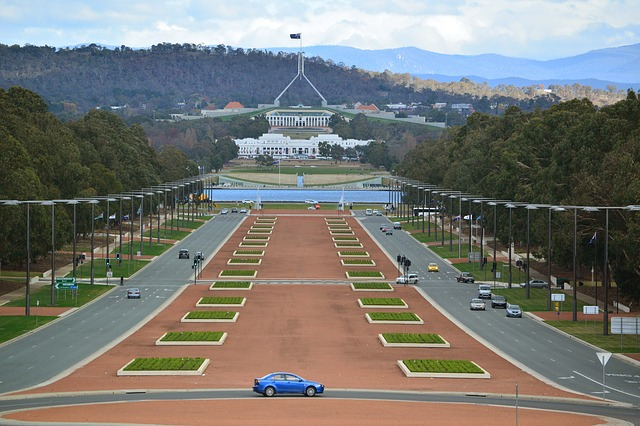
Newly arrived in Australia in the mid-nineteenth century, an English gold-digger wrote home that “Rank and title have no charms in the Antipodes.” A few decades later, a bestselling novel dubbed Australia The Workingman’s Paradise. With plentiful land and scarce labor, nineteenth-century Australia had among the highest wages in the world.
As Australia leads into a federal election, many workers are feeling a little less sanguine about the state of the labor market than their nineteenth-century counterparts. In December 2018, the unemployment rate was 5%. According to the OECD’s harmonised unemployment series, Australia’s unemployment rate in 2018 was nearly 1 percentage point above the average in the G7. This stands in contrast to the experience during the Great Recession, when Australia’s unemployment rate was 2 to 3 percentage points below the G7 average.
For workers as a whole, the labor share has dropped by 7 to 10 percentage points since the 1970s (depending on precisely which measure you use). Wages have also become more dispersed. Top 100 CEOs now earn around 75 times as much as full-time workers. Over the period 1975–2016, real earnings grew by 24% at the 10th percentile, 46% at the median, and 74% at the 90th percentile.
Wage problems have become particularly acute in recent years. In the past half-dozen years, average real wages have flatlined, compared to a growth rate of around 1% a year in the preceding decade. This has led economist Saul Eslake to warn of a “real wage underhang,” a contrast with Australia’s “real wage overhang” in the 1970s.
Underpaid workers make poor customers. Retail sales and car sales are down on previous years. As the Reserve Bank of Australia has observed, household spending seems to have been supported largely by a decline in the household savings rate. With household debt at record highs, it is doubtful that this can continue forever.
One policy debate in the upcoming Australian election will be around unionization. From 1920 to 1980, half the workforce was in a union. Today, that figure is 13%, not much above the US unionization rate (11%). Indeed, both California and New York have a higher union membership rate than Australia. Given the well-documented link between unionization and earnings inequality, laws that make it difficult for unions to organize are likely to be one explanation for wage dispersion, and perhaps even for sluggish wage growth.
A related concern is that monopolies could not only harm consumers, but workers too. Australia has highly concentrated markets, and mark-ups have risen over the past generation. The combination of monopoly power in product markets and monopsony power in labor markets ends up benefiting shareholders at the expense of customers and employees. Monopsony power may help explain why profits have surged while wages have slumped.
Is the impact of technology on Australian jobs accelerating? As Jeff Borland and Michael Coelli have documented, the past generation has seen a steady decline in the share of jobs involving routine tasks (a finding that parallels research for the US and Europe). However, they do not detect any relationship between the adoption of computer-based technologies and the pace of structural change and job turnover. Australia presently has fewer industrial robots per manufacturing worker than Europe or the US.
In policy terms, the opposition Australian Labor Party (of which I am a member) has announced that if we win the next election, we will ensure that workers employed under a labor hire arrangement cannot be paid less than workers directly employed by the same firm. We will restore weekend pay loadings, which were reduced by the Fair Work Commission in 2017. We will ban “sham contracting” in which firms attempt to pay workers as independent contractors yet treat them as employees. On the transparency front, we will require large firms to report on both their gender pay gap, and the gap between CEO pay and median worker pay.
Finally, we are concerned about the rising share of workers who are paid according to industry-specific minimum wages, known as “awards.” As enterprise bargaining has waned, one in four workers are now reliant on award wages. We are therefore consulting on whether there is scope to stimulate the role of collective bargaining by enhancing the role of multi-employer bargaining.
© Andrew Leigh
Dr Andrew Leigh is a former professor of economics at Australian National University and currently a Member of the Australian House of Representatives.
Please note:
We recognize that IZA World of Labor articles may prompt discussion and possibly controversy. Opinion pieces, such as the one above, capture ideas and debates concisely, and anchor them with real-world examples. Opinions stated here do not necessarily reflect those of IZA.